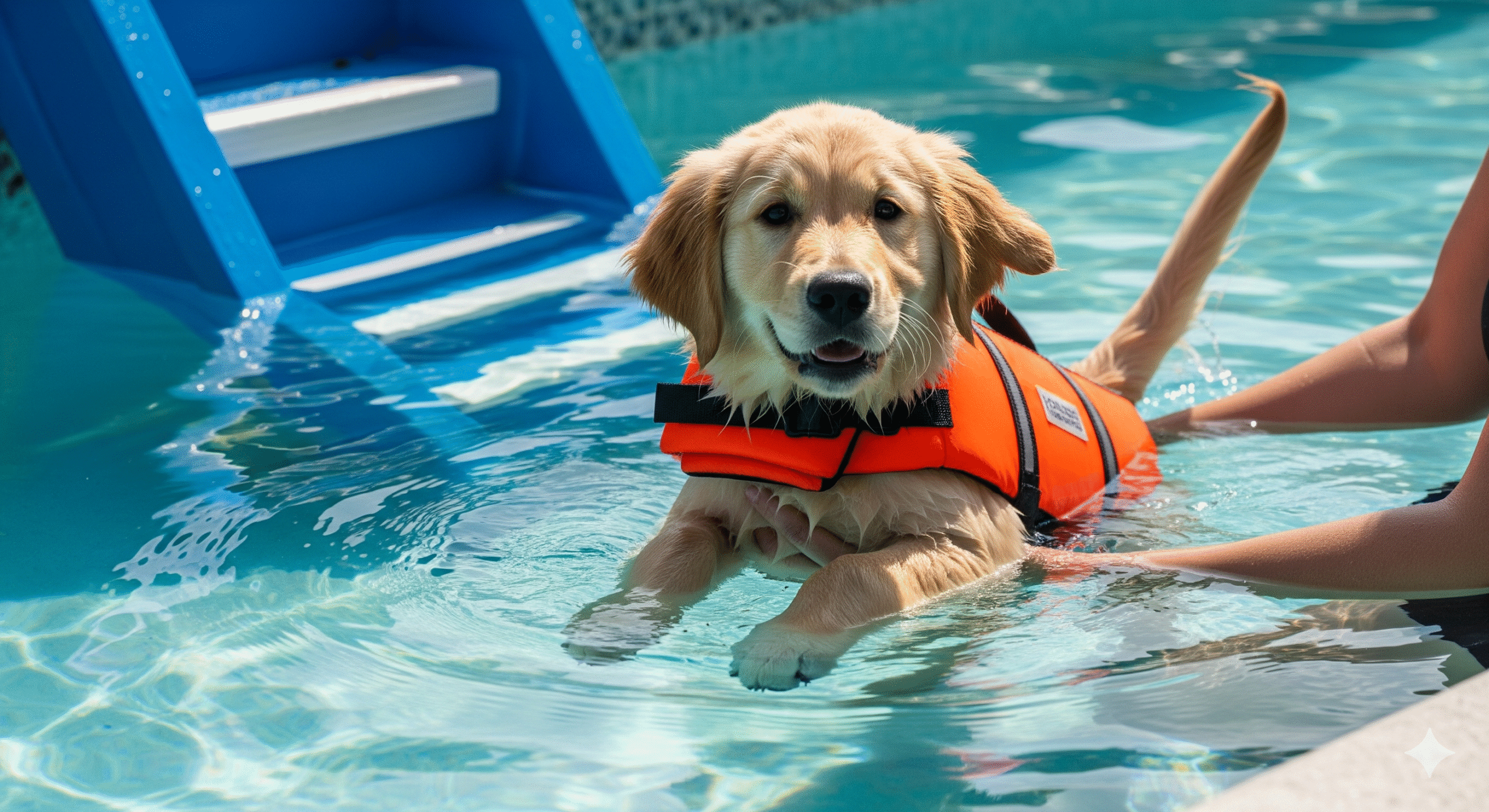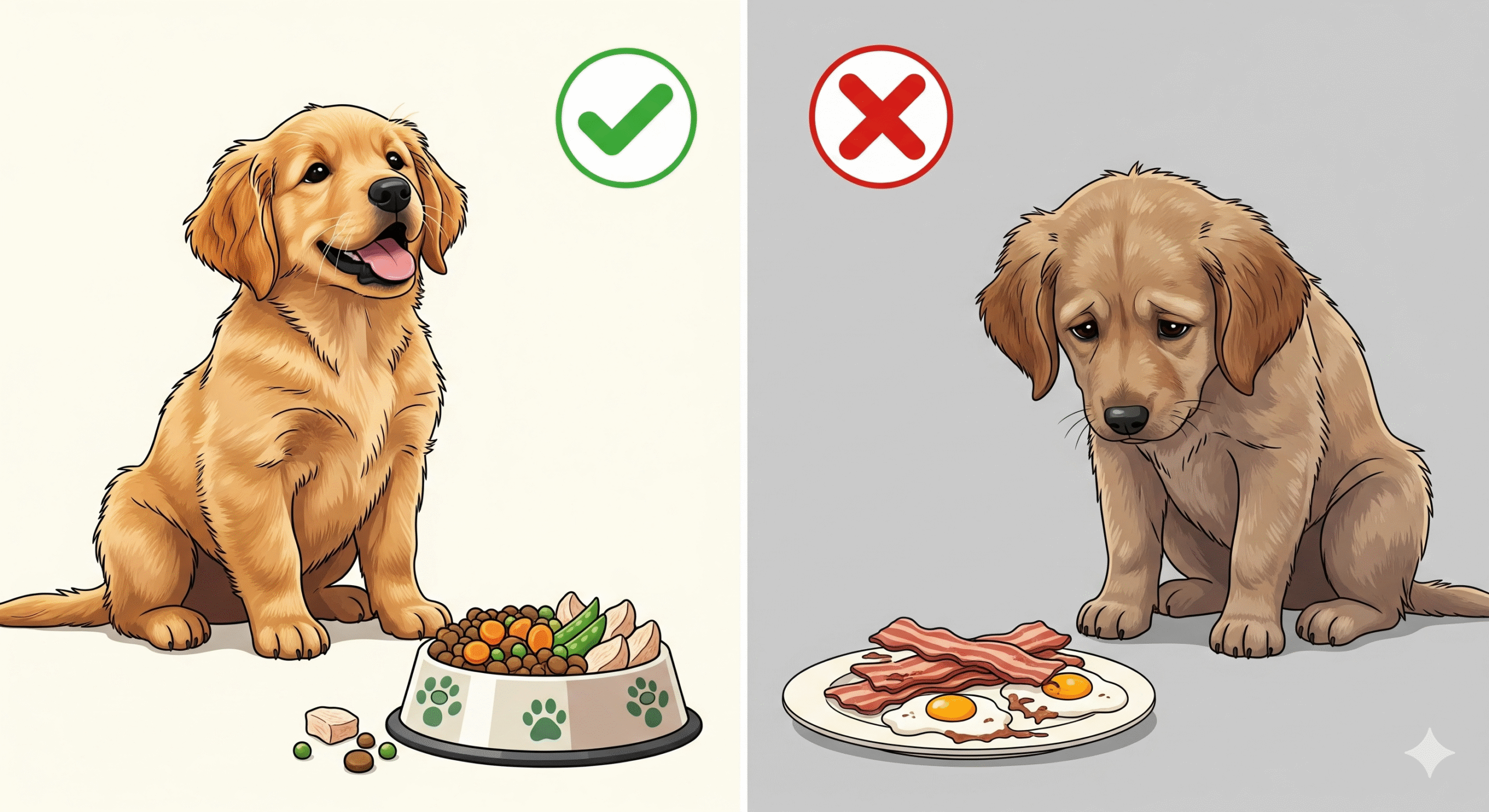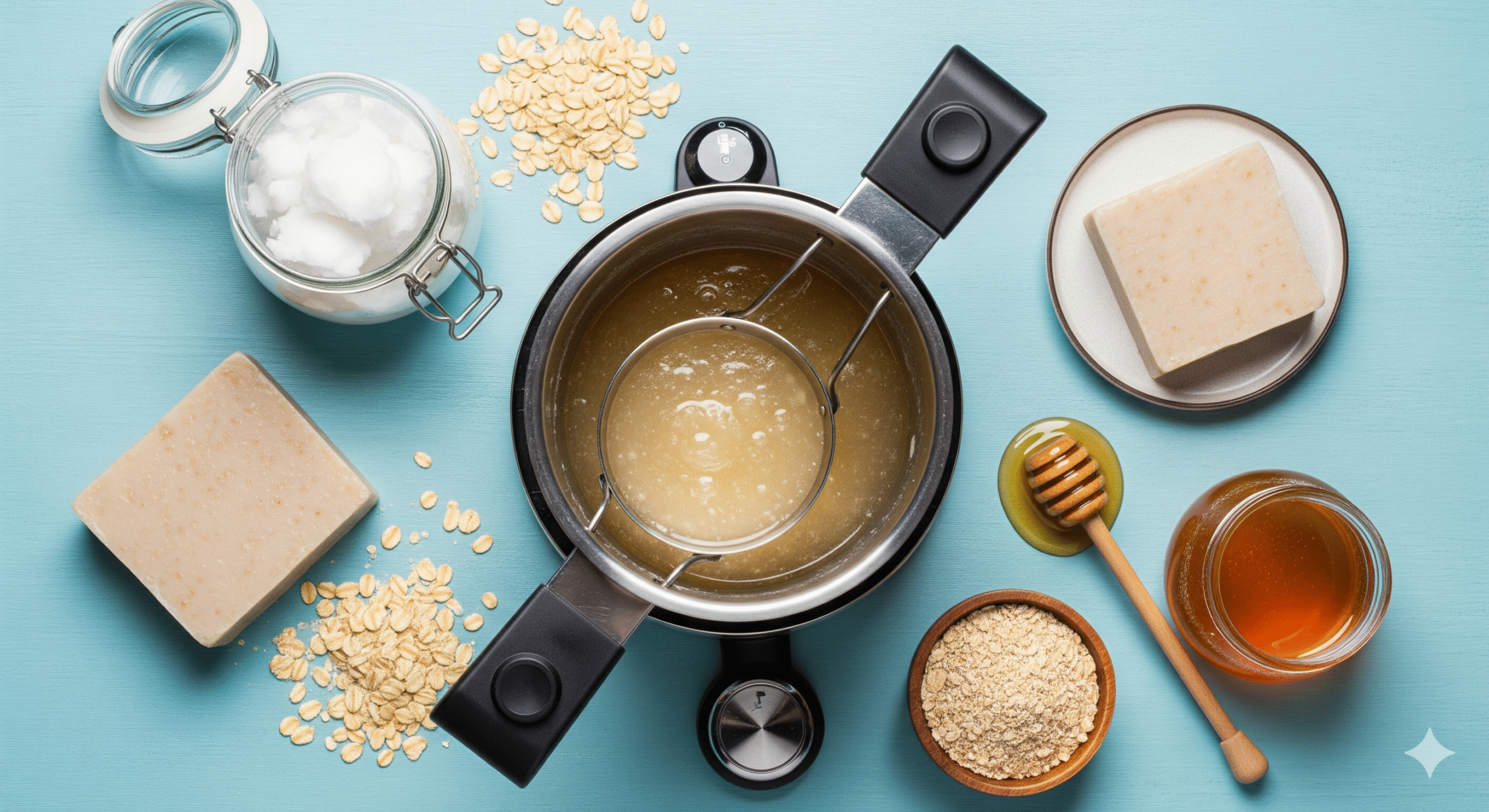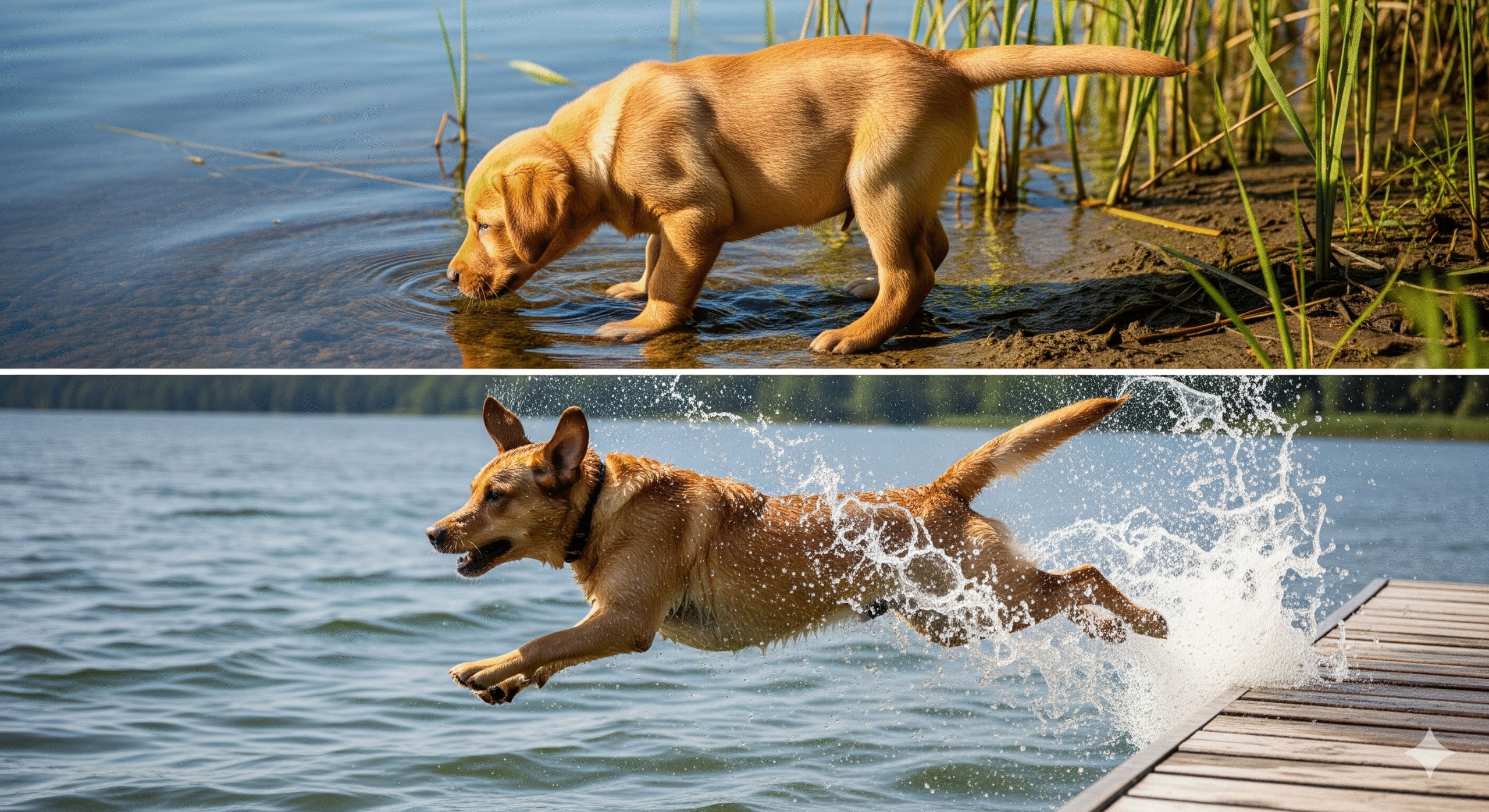The image of a dog joyfully splashing in the water is iconic, but the assumption that all dogs are “natural swimmers” is a dangerous myth. For puppies, a positive and safe introduction to water is one of the most important lessons you can provide. A traumatic first experience can lead to a lifelong fear of water, while a patient, structured approach can build confidence and create a fun, low-impact exercise for life. Beyond the fun, pool safety is a critical responsibility for any dog owner, as thousands of pets drown in backyard pools each year.
This comprehensive guide will walk you through every step of the process, from assessing your puppy’s readiness to teaching basic swimming skills and implementing non-negotiable safety protocols. We’ll prioritize safety and positivity at every turn to ensure your puppy’s aquatic adventures are always happy and secure.
Here’s what we’ll cover:
✔️ How to assess if your puppy is ready for swimming lessons
✔️ Essential safety gear, including the life jacket debate
✔️ A step-by-step training plan to build water confidence
✔️ How to teach exit strategies—the most important pool skill
✔️ Pool safety infrastructure every dog owner needs
✔️ What to do if your puppy falls in accidentally
✔️ Breed-specific considerations for water activities
Let’s make a splash the safe and smart way!
First, Assess Your Puppy’s Readiness 🧐
Not every puppy is ready to dive in. Consider these factors first:
- Age: Wait until your puppy has had at least 2-3 rounds of vaccinations (usually around 16 weeks) before introducing them to public bodies of water to avoid exposure to parasites and bacteria. For a clean, chlorinated home pool, you can start introductions slightly earlier with vet approval.
- Health: Ensure your puppy is healthy. Avoid swimming if they have ear infections, skin irritations, or are recovering from an illness.
- Temperament: Is your puppy confident and curious, or shy and hesitant? This will determine the pace of your training.
Essential Safety Gear: Non-Negotiables 🛡️
1. A properly fitted dog life jacket 🦺
This is mandatory, especially for beginners.
- Why: It provides buoyancy, reduces panic, and makes it easy for you to guide and support your puppy. It also has a sturdy handle on the back to lift them out of the water instantly.
- Fit: It should be snug but not restrictive. You should be able to fit two fingers between the straps and your puppy’s body.
2. Pool Ramp or Exit stairs 🪜
This is the single most important safety feature for a pool.
- Why: Pool edges are slippery and too high for a puppy to climb. They can quickly become exhausted and drown trying to find a way out. A ramp teaches them where the safe exit is.
- Training: You will train your puppy to use this before they ever need it in an emergency.
3. Non-Slip Matting 🧻
Place this around the pool deck to prevent your puppy from slipping and injuring themselves on the wet, hard surface.
The Step-by-Step Swimming Lesson Plan 🎓
Goal: Build confidence, not force skill.
Step 1: Introduction to Water (Outside the Pool) 💧
- Let your puppy explore the pool area on leash with their life jacket on.
- Sit by the pool steps with them and let them dip their paws in. Reward with treats for any calm interaction with the water.
Step 2: The First “Swim” (On the Steps) 🚶♂️
- Carry your puppy into the shallow end and stand on the steps where they can touch the bottom.
- Hold them securely and let them get used to the sensation of buoyancy. Keep it brief (2-3 minutes) and end with praise and treats.
Step 3: Teaching the Exit (“Find the Ramp!”) 🪜
- This is your first and most important command.
- With your puppy in the water, gently guide them toward the ramp or stairs.
- As their paws touch the ramp, use a clear cue like “Out!” or “Ramp!“
- When they walk out, reward them with an amazing treat (chicken, hot dog). Repeat this countless times.
Step 4: Short, Supported Swims 🏊♂️
- Once they’re comfortable on the steps, hold onto their life jacket handle and encourage them to paddle a short distance toward the ramp.
- Keep sessions extremely short (5 minutes max) to avoid exhaustion and hypothermia.
Critical Pool Safety Rules & Infrastructure 🚧
- Supervision is Mandatory: Never, ever leave your puppy unattended near a pool. Not for one minute.
- Secure Fencing: The pool area should be surrounded by a secure, puppy-proof fence with a self-latching gate.
- Alarm System: Consider a pool alarm that sounds when something breaks the surface of the water.
- Winter Covers are DEADLY: Solid winter covers can look like solid ground but will trap and drown a pet that walks on them. Ensure your cover is properly secured and your puppy is never unsupervised near it.
What to Do If Your Puppy Falls In 🆘
- Stay Calm: Your panic will scare them.
- Call Them to the Steps: If they know the “Out!” command, use it. Encourage them to swim to you at the exit.
- Reach or Throw, Don’t Jump: If you need to rescue them, try to reach for them or throw a flotation device. Jumping in can accidentally land on them.
- Lift by the Handle: Use the handle on their life jacket to lift them out.
Breed-Specific Considerations 🐕
- Natural Swimmers: Retrievers, Spaniels, Poodles. They often take to water easily but still need safety training.
- Brachycephalic (Flat-Faced) Breeds: Bulldogs, Pugs, Boxers. They are at extremely high risk of drowning. Their anatomy makes breathing while swimming very difficult. Many should never swim without a life jacket and very close supervision.
- Top-Heavy Breeds: Bulldogs, Dachshunds. They can have difficulty staying upright in the water.
Final Checklist for Pool Safety ✅
☑️ I have a properly fitted dog life jacket.
☑️ My pool has a secure ramp or stairs that my puppy is trained to use.
☑️ I have secured the pool area with a fence.
☑️ I never leave my puppy unsupervised near the pool.
☑️ I know how to perform canine CPR (talk to your vet about a class).
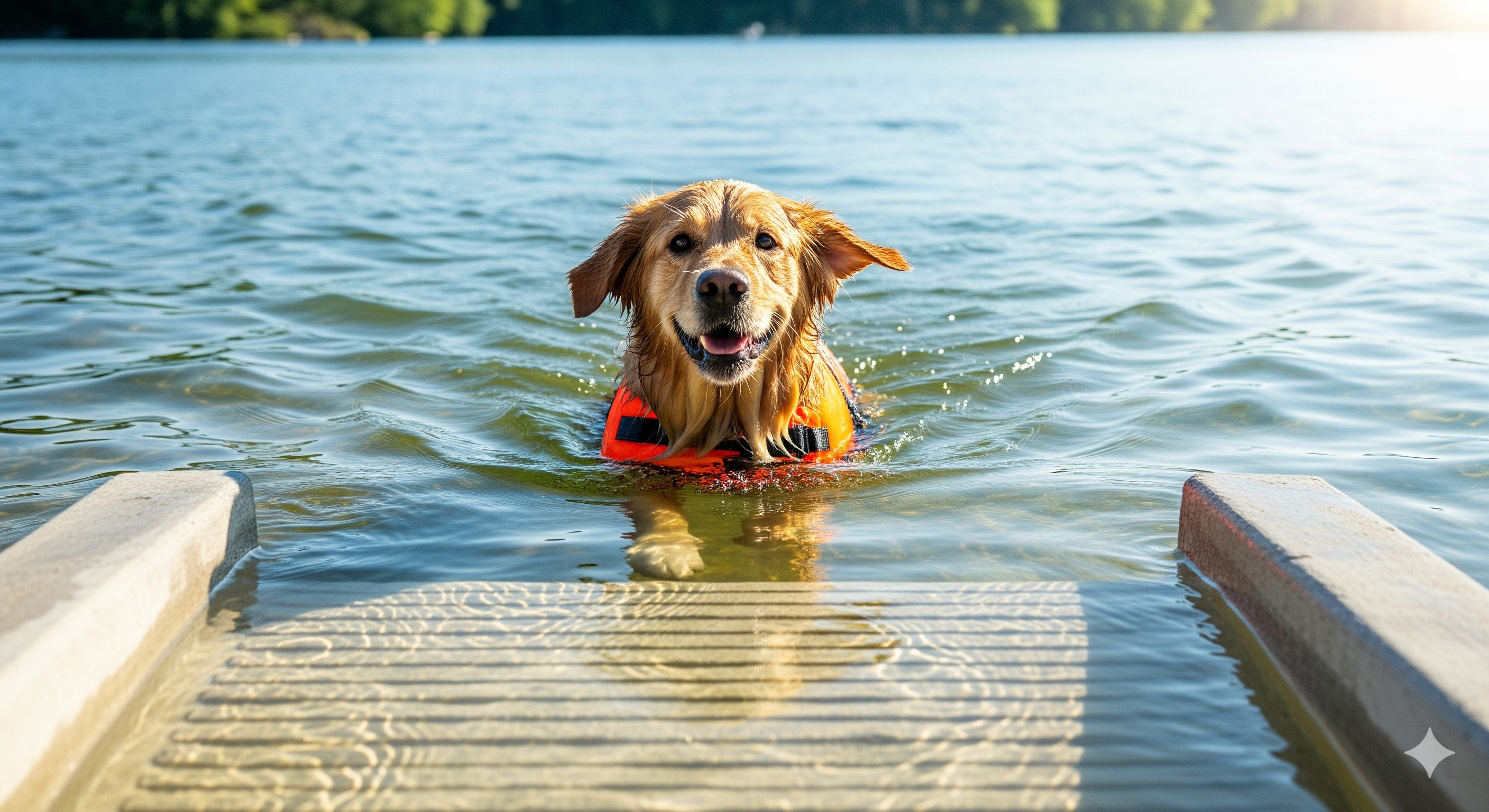
“A consistent daily schedule is key for potty training, managing energy levels, and helping your puppy feel secure. Your schedule should include designated times for potty breaks, playtime, training sessions, naps, and of course, meals. Most puppies need to be fed three to four times a day, but the exact quantity per meal is just as important as the timing. Figuring out the right amount can be confusing, as their needs change rapidly as they grow. To create an accurate feeding schedule tailored to your puppy’s specific requirements, bookmark our comprehensive chart on How Much to Feed a Puppy by Weight & Age.“

